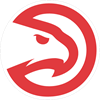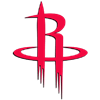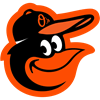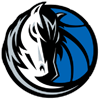This article will look at the recent ADP on Underdog Fantasy's NFL best ball contests and try to identify which late-round players offer the most upside for their price. Each of the five blurbs will lay out the best-case scenario for the player in question while trying to acknowledge the risks as well – indeed many of these players offer upside at price precisely because (perceived) risks drive down the price in the first place.
Each blurb will describe a best-case (but still reasonable) 2023 scenario with each player. The unspeakable fact is that the best-case for a lot of these players' fantasy production is one where teammates get hurt and open up more usage, but the projection listed is one where no such injuries occur. Factor in the significance of that as you will. The players are listed in order of descending ADP.
Note: some players I would include on this list have been omitted because I already listed them in this prior article about the best targets in the 18th round – players such as Trey McBride, Josh Palmer, DeWayne McBride, Keaontay Ingram and Zach Evans would all be candidates for this list as well.
Sign up for Underdog to receive a free 6-month subscription to RotoWire and first deposit match up to $100 with promo code RWNFL. Claim this special offer now at https://play.underdogfantasy.com/pc-MyVn4cbt6l.
Nico Collins, WR, HOU (137.2 ADP)
There are pretty much zero wide receivers at this point in the ADP who are realistic candidates to serve as the WR1 for their team. Collins and teammate John Metchie (176.2 ADP) might be the only exceptions after Odell Beckham (112.1 ADP). I won't say Collins is going too late – there is plenty of risk with so many moving parts in a rebuilding offense – but I will say his upside is unique at this point.
There are understandable concerns about Collins. Some might wonder whether he's any good himself, dismissing his otherwise promising per-snap numbers in Houston as a product of lack of competition or whatever else. Some might look at the signing of Robert Woods, along with the draft picks of Nathaniel Dell (third round) and Xavier Hutchinson (sixth round), and conclude that DeMeco Ryans must not like Collins and intends to replace him with those previously named. These concerns are misguided.
There are two reasonable concerns with Collins. The first is that the Houston offense in general projects poorly. Not much to be done about that. The second is the debut of the 2022 second-round pick Metchie, who missed his rookie season to undergo leukemia treatment. Now healthy, Metchie is a candidate to play a three-down role for Houston and will likely draw a good number of targets doing it. With that said, these two reasonable concerns with Collins are not enough to tarnish his appeal as a fantasy target.
The concerns around Collins' own talent do not hold up. His collegiate production and athletic testing strongly imply an NFL starter, and the same is implied by Collins' production to this point. Before turning 24 Collins played 935 snaps, drawing 126 targets. That's a very healthy target rate for a player at that age, one sharing the stage with a WR1 type in Brandin Cooks. The target rate demonstrates Collins' ability to draw usage. But what about his efficiency? Usage is the first step, but failure with usage eventually results in demotion. Good news: Collins' efficiency checks out fine when accounting for the offense he played in. The Houston passing game, for instance, has completed 65.3 percent of its targets at 6.7 yards per target since 2021, while Collins caught 55.6 percent of his targets at 7.4 yards per target. This calculates as slightly below baseline to me – I'd want Collins' YPT at 7.7 or his completion rate more around 59.0 percent – but for a first and second-year player Collins generally showed the ability to reinforce the team baseline while drawing a target every 7.4 snaps.
The concerns around Collins' 2023 playing time/usage also don't hold up. Woods will likely open the season as starter across from Collins, but that's good news for Collins because Woods is completely toast, and there will be slack that by default shifts usage toward the other Houston pass catchers. Woods is a complete non-factor. Metchie is much more formidable competition than Woods, but (A) Metchie operates at lower depths than Collins anyway, meaning they should be able to coexist, and (B) as a slot regular Metchie would likely be caught in a zero-sum game with the slot specialist Dell, meaning Metchie and Dell are just as likely to produce at each other's expense as much or more than they would Collins. Where Collins would have reason to worry is if the Texans had added another big, fast target to line up outside and run downfield. None of Woods, Metchie nor Dell qualify as such.
Best-case scenario: 900 snaps, 125 targets, 75 receptions for 1,050 yards and six touchdowns
Marvin Mims, WR, DEN (162.9 ADP)
The floor is admittedly low for Mims in his rookie year, especially since he won't turn 22 until March. The Broncos have a crowded group of returning pass catchers, with all of Jerry Jeudy, Courtland Sutton, Tim Patrick and KJ Hamler possessing starter-like profiles. Jeudy, Sutton and Patrick are all well-paid, moreover, and like Mims, Hamler is a former second-round pick himself and is still young at 24 in July.
Not only are these veteran Broncos receivers well-paid or/and overqualified for their roles, but all four have injury issues to consider, too. While it seems unlikely that the Broncos will move Jeudy or Sutton and Patrick's one remaining year is too expensive to move, it seems like Hamler might get shipped out to clear room for Mims after the first three years of Hamler's career were wiped out by injury. Of course, Hamler's history makes one worry about whether he'd stay healthy even if the Broncos keep him. There's still reason to believe Hamler has talent, so if he stays in Denver and stays healthy then he would prove a significant obstacle to Mims as the team's primary downfield threat, but if either of those two conditions fails then it clears room for Mims to get his foot into the door. That's all he needs.
As much as Mims won't draw nearly as many targets per snap or play as many snaps as Jeudy or Sutton, Mims still stands out among the three because Mims is easily the best deep-ball threat of the three, and it's that part of the field specifically that Sean Payton needs to unlock to get Russell Wilson back into playing shape. Wilson is overexposed when forced to throw over the middle with volume, so rather than volume what Wilson needs is big plays to the parts of the field that he can easily access, which is to say down the field and especially down the seam. Jeudy and Sutton will carry whatever volume Wilson can withstand throwing to the sidelines, but there's a void in the seam if Hamler or Mims don't step up there.
If Mims can claim those moonshot targets then there's reason to believe he will thrive. Mims was memorably productive at Oklahoma and with 4.38 speed he has the wheels to credibly pull away downfield, where Wilson desperately needs help. When you watch Mims it becomes immediately clear – the guy was born to run fast and make crazy catches.
Best-case scenario: 600 snaps, 70 targets, 45 receptions for 735 yards and five touchdowns
D'Onta Foreman, RB, CHI (167.7 ADP)
Foreman is generally projected as the Bears' third or fourth RB by a lot of fantasy analysts but I'm not afraid to say those people are guilty of simply repeating things they've already heard, especially as it pertains to the hype around rookie fourth-round pick Roschon Johnson (147.6 ADP). It's true that Khalil Herbert (122.2 ADP) is the rightful incumbent and a formidable player in general, just as it's true that Foreman will have to earn the right to compete with Herbert, let alone actually take usage from Herbert. The error in Foreman's ADP, though, is that it contains the assumption that Johnson rather than Foreman would be second in line to Herbert, who also likely has workload limitations at a smallish 5-foot-9, 210 pounds. Though always productive in his football career, Herbert was never a workhorse at the collegiate level. In other words, there should be scraps to hand out after Herbert even if Herbert claims the RB1 role and stays healthy all year.
Those scraps, especially in the ground game, should go to Foreman before Johnson. You see a lot of bad prospect analysis that posits the only reason Johnson was a collegiate backup was because he was on the same team as Bijan Robinson. What those people fail to note is that Johnson would have backed up Foreman at Texas too. Foreman ran for nearly as many yards in one season at Texas (2,028 yards at 6.3 YPC) as Johnson did in four (2,190 yards at 5.6 YPC).
Foreman likely has passing-down limitations and both he and Herbert could lose out to Johnson in that one capacity, but (A) Johnson could lose in that capacity to Travis Homer and (B) claiming the passing-down work is still a dead-end to Johnson's own fantasy value if he can't displace Herbert or Foreman as runners, which he can't.
Best-case scenario: 170 carries for 765 yards and five touchdowns, six catches for 60 yards
Josh Downs, WR, IND (192.9 ADP)
Though perilously small at 5-foot-9, 171 pounds, Downs was a high-volume receiver at North Carolina, playing a workhorse role and attacking all depths of the field with impunity. Sometimes there's a higher physical price to pay in the NFL, and perhaps the league feared Downs would suffer for that fact, because it's otherwise not obvious why Downs fell to the third round. The Colts were doubtlessly happy to acquire him there, though, because they have no viable wide receiver depth after Michael Pittman and Alec Pierce. Isaiah McKenzie is theoretically their slot receiver otherwise, but McKenzie is just a 20-snap player.
Even if the Colts are a run-heavy team as they ease in rookie quarterback Anthony Richardson, there should be slack for Downs to exploit in the target rotation. Pierce, though a starter, will draw much fewer targets per snap because he'll likely be running the farthest downfield of the Colts receivers, if only to tie up the safety on the side of the field in question. Pittman might see a good amount of double-team attention, perhaps from the other safety, leaving Downs and perhaps tight end Jelani Woods as the remaining considerations. When the Colts go three-wide it should be Downs who has the easiest matchup, and he was always the Colts receiver likely to draw the more targets per snap – he just never had a prayer of playing as many snaps as Pittman and probably Pierce will.
Best-case scenario: 700 snaps, 100 targets, 70 catches for 800 yards and six touchdowns
Sam Howell, QB, WAS (200.0 ADP)
Howell has a low floor due to questions both about his own abilities and the amount of job security he might have with Jacoby Brissett present as an alternative, but going nearly undrafted on Underdog puts Howell at a price where he isn't even that risky, especially for the upside he offers. As an aggressive downfield thrower with plus rushing ability Howell's usage is the high-value sort at quarterback, and Washington has no real reason to go to Brissett unless they're in playoff contention later in the year despite Howell playing poorly. Washington more likely will be using 2023 as a rebuilding year, one where they can extensively evaluate whether Howell is fit to start in 2024 and onward. As long as Howell starts at least 12 games then he should prove a high-upside QB2, and a quarterback with his tendencies is a real spike week threat especially in shootouts.
Best-case scenario: Starts 17 games – 4200 yards and 25 touchdowns passing, 450 yards and three touchdowns rushing









































